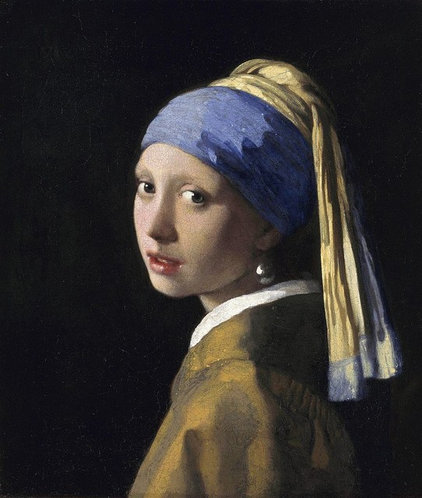Merry Christmas. The following tidbits from art history are offered as presents to use in your painting or art history knowledge.
Chiaroscuro is an art technique used by artists such as Baglione, Caravaggio and Vermeer in the 16th and 17th centuries.
The Italian word for "light and shade," "chiaroscuro" is identified by contrasts affecting an overall composition. Using opposite ends of the light-dark spectrum results in drama, depth and visual interest, as seen here in "Girl with a Pearl Earring,"by Johannes Vermeer.
Vermeer lived and worked in Delft and completed only 35-40 paintings in his lifetime. The poetic quality of his work ranks has as one of the greatest 17th century Dutch masters, second only to Rembrandt.
The Impressionists perfected new techniques in painting. They discovered, and showed through their works, that objects take on color from surroundings. They used clear, clean colors straight from paint tubes. Shadows were made from various colored combinations of tones with light permeating all.
Impressionists' darks were created from blue or green plus Alizarin Crimson. They colored their paintings' shadows with violet made up of cobalt blue or ultramarine blue with red or cobalt and manganese violet.
"Primary colors look brightest when brought into contrast with their complementaries." Claude Oscar Monet
Monet's Limited Palette included eight colors; Titanium White (opaque), Cadmium Yellow light and Cadmium Yellow, Viridian Green, French Ultramarine, Cobalt Blue, Alizarin Crimson and Vermilion. He used Ivory Black up to 1886. After that, he used no tube black.
Cast shadows show a blocked light source in paintings. Darker, sharp definite edges become lighter the farthest from the object casting shadows. Also, the side of an object not facing the light source should show a softer edge than the cast shadows. This creates more subtlety and makes objects appear three-dimensional.

No comments:
Post a Comment